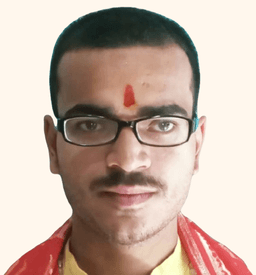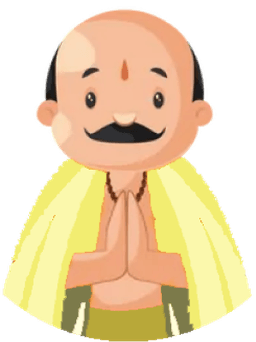Chaitra Navratri April 2024
.jpg)
About Chaitra Navratri 2024
Navaratri is a nine day festival, celebrating the nine forms of goddess Durga. It marks the beginning of Hindu New Year according to the mythology calendar. This time period is very auspicious and sacred in hindu religion in various prospects, that can be starting a new business or tying the knot for marriage or planning any important event in one’s life. Hinduism is the only religion in the world which emphasises the worship of God in female Divine form i.e. goddess Durga known as Adishakti (the mother of all souls). Chaitra Navaratri falls in the hindu month of Chaitra which in western calendar is around the months of March-April. Devotees of Mata Rani observe fast and worship her ritually during these 9 days.
Navaratri is a nine day festival, celebrating the nine forms of goddess Durga. It marks the beginning of Hindu New Year according to the mythology calendar. This time period is very auspicious and sacred in hindu religion in various prospects, that can be starting a new business or tying the knot for marriage or planning any important event in one’s life. Hinduism is the only religion in the world which emphasises the worship of God in female Divine form i.e. goddess Durga known as Adishakti (the mother of all souls). Chaitra Navaratri falls in the hindu month of Chaitra which in western calendar is around the months of March-April. Devotees of Mata Rani observe fast and worship her ritually during these 9 days.
Which form is worshipped on which day ?
- First Chaitra Navratri: Maa Shailputri Puja, Ghatasthapana: 09 April 2024, Tuesday
- Second Chaitra Navratri: Maa Brahmacharini Puja 10 April 2024, Wednesday
- Third Chaitra Navratri : Maa Chandraghanta Puja 11 April 2024, Thursday
- Fourth Chaitra Navratri: Maa Kushmanda Puja 12 April 2024, Friday
- Fifth Chaitra Navratri : Maa Skandamata Puja, 13 April 2024, Saturday
- Sixth Chaitra Navratri: Maa Katyayani Puja 14 April 2024, Sunday
- Seventh Chaitra Navratri: Maa Kalratri Puja 15 April 2024, Monday
- Eighth Chaitra Navratri: Maa Mahagauri Durga Maha Ashtami Puja 16 April 2024, Tuesday
- Ninth Chaitra Navratri : Maa Siddhidatri Durga Maha Navami Puja 17 April 2024, Wednesday
- Tenth day of Navratri: Durga idol immersion 18 April 2024, Thursday
What and when to eat in Navarartri Fast?
The soul purpose of the navaratri fast, i.e. vrat is to purify the mind, soul and body while keeping the focus on spiritual connection with the divine Goddess. So, it is advised to keep it clean and light by including fruits, dairy and nuts during the fast. These also includes dishes made from buck-wheat flour, fox nuts, samak rice and dried water chest-nut flour. Any grains consumed in day to day lives are not consumed in navratri fasting. Specific vegetables like potatoes, sweet potatoes, carrots, cucumber, etc can be included during the fast, as these are a good source of energy and dietary fibre. Variety of fresh and seasonal fruits such as banana, apples, pomegranate and oranges, should be added as these provide with essential vitamins and minerals.
The soul purpose of the navaratri fast, i.e. vrat is to purify the mind, soul and body while keeping the focus on spiritual connection with the divine Goddess. So, it is advised to keep it clean and light by including fruits, dairy and nuts during the fast. These also includes dishes made from buck-wheat flour, fox nuts, samak rice and dried water chest-nut flour. Any grains consumed in day to day lives are not consumed in navratri fasting. Specific vegetables like potatoes, sweet potatoes, carrots, cucumber, etc can be included during the fast, as these are a good source of energy and dietary fibre. Variety of fresh and seasonal fruits such as banana, apples, pomegranate and oranges, should be added as these provide with essential vitamins and minerals.
What things to avoid during Navratri?
Tamsik food items such as onion, garlic, eggs and meat should be avoided during these nine days. Also processed items and packaged food is included in the list. Rock salt or sendha namak should be used instead of the regular processed salt. On fasting days, all grains, pulses and beans should be abstained from.Refined sugar should be avoided during these days and alternatives such as Honey and Jaggery should be consumed. Diabetic patients should avoid sabudana, also called tapioca pearls which are widely consumed in navaratri, as it mainly contains starch, which can rapidly increase blood sugar levels. As these days are sacred, cutting hair and nails are activities to abstain during these days.
Tamsik food items such as onion, garlic, eggs and meat should be avoided during these nine days. Also processed items and packaged food is included in the list. Rock salt or sendha namak should be used instead of the regular processed salt. On fasting days, all grains, pulses and beans should be abstained from.Refined sugar should be avoided during these days and alternatives such as Honey and Jaggery should be consumed. Diabetic patients should avoid sabudana, also called tapioca pearls which are widely consumed in navaratri, as it mainly contains starch, which can rapidly increase blood sugar levels. As these days are sacred, cutting hair and nails are activities to abstain during these days.
Difference between Chaitra and Sharad Navaratri
Navaratri occurs four times in a year where Magha and Ashada Navaratri are the secretive one's, Chaitra Navaratri marks the beginning of summer season as the it falls in the month of March-April, and marks the beginning of hindu new year, it ends with the beginning of Ram Navmi. Shardiya Navaratri on the other hand is known as the Maha Navaratri, it marks the beginning of the autumn season and the festive season beginning with Dussehra. Celebration of both navaratri is same with devotees observing fasts and rituals of worshipping goddess Durga.
Navaratri occurs four times in a year where Magha and Ashada Navaratri are the secretive one's, Chaitra Navaratri marks the beginning of summer season as the it falls in the month of March-April, and marks the beginning of hindu new year, it ends with the beginning of Ram Navmi. Shardiya Navaratri on the other hand is known as the Maha Navaratri, it marks the beginning of the autumn season and the festive season beginning with Dussehra. Celebration of both navaratri is same with devotees observing fasts and rituals of worshipping goddess Durga.
Benefits of fasting in Navaratri
Fasting helps to detoxify the body by eliminating toxins and impurities, that helps to improve overall health and well-being. It helps the digestive system to rest and heal, which can reduce digestive issues such as bloating, constipation, and indigestion. Abstaining from food and other worldly pleasures, can improve focus on spiritual journey and helping to attain a higher level of self-consciousness. It requires discipline which can help with increased will power and self-control.
Fasting helps to detoxify the body by eliminating toxins and impurities, that helps to improve overall health and well-being. It helps the digestive system to rest and heal, which can reduce digestive issues such as bloating, constipation, and indigestion. Abstaining from food and other worldly pleasures, can improve focus on spiritual journey and helping to attain a higher level of self-consciousness. It requires discipline which can help with increased will power and self-control.
How to do Kanya bhoj/ Kanjak pooja in Navaratri?
Firstly prashad is made on the morning of ashtmi/navmi first, which consist of Chana sabzi ( black chickpeas), Sooji Halwa and Poori, young girls upto age 15, are invited in usually 5,9 or 11 in number for the pooja. Their feet are washed as a sign of welcoming goddess Durga home, the area of pooja is cleaned preferably with GangaJal and kanjak's are made to sit on a clean mat or piece of cloth on a raised platform. They are served with prashad after praying and teeka is applied on their forehead while getting their blessings. Gifts and some amount of cash is given to them as token of gratitude and blessing. Lastly ensuring their happiness and harmony, they are bid a goodbye and sent back home.
Firstly prashad is made on the morning of ashtmi/navmi first, which consist of Chana sabzi ( black chickpeas), Sooji Halwa and Poori, young girls upto age 15, are invited in usually 5,9 or 11 in number for the pooja. Their feet are washed as a sign of welcoming goddess Durga home, the area of pooja is cleaned preferably with GangaJal and kanjak's are made to sit on a clean mat or piece of cloth on a raised platform. They are served with prashad after praying and teeka is applied on their forehead while getting their blessings. Gifts and some amount of cash is given to them as token of gratitude and blessing. Lastly ensuring their happiness and harmony, they are bid a goodbye and sent back home.
































































































